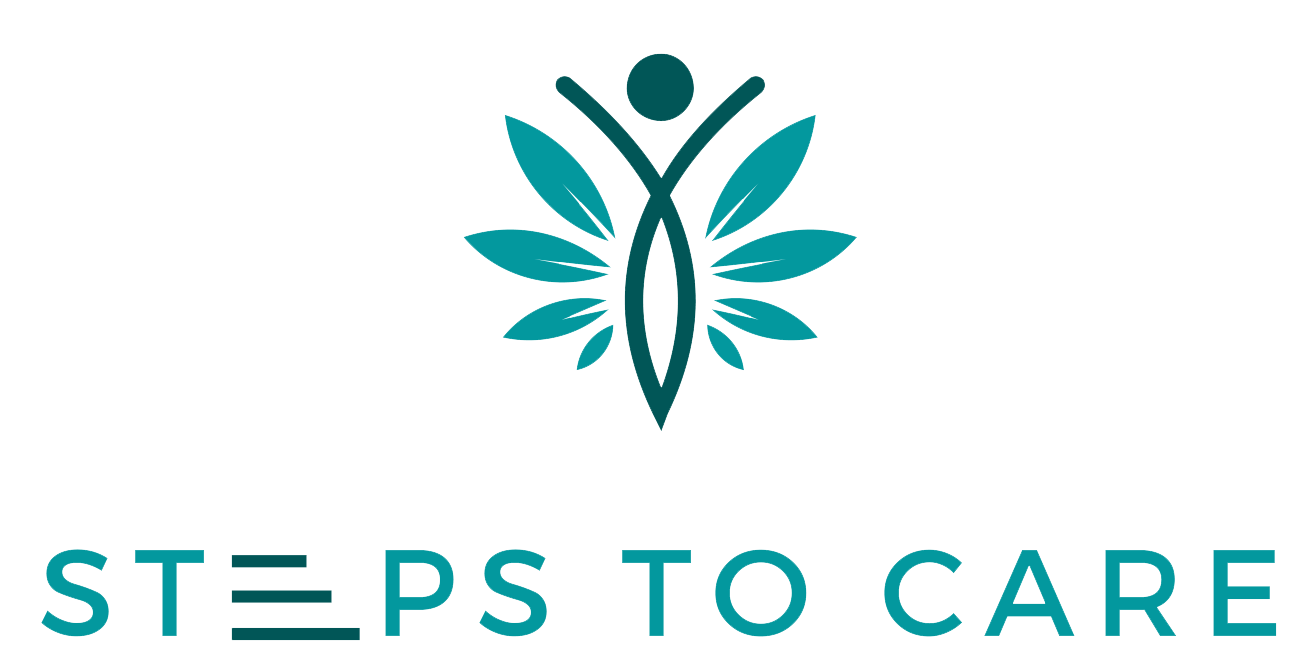सेवा लिनको लागी विवरण भर्नुहोस्
BLogs
BLOGS
Baby-Sitting Training
Description:
Baby-sitting is a big responsibility, challenging as well as worth doing (fun) job. Precious gift of god is in your hands from parents. You are the charge to care. Baby sitting training is there to help you understand the baby, your role, your responsibility, prepared for adverse situations, prepared for life saving skills when needed.
Steps to Care is launched training for Baby Sitting in Nepal for the first time. Although, basic knowledge and skill of baby-sitting are widely helpful for everyone who involve in baby care, we highly encourage to be parents to get this training for better prepared for baby care and teenagers to take responsibility, learn making money and being professional.
Learning objectives:
- Describe key role and responsibilities of baby sitters
- Outline the basic concept of leadership and prefessional care
- Identify key area of safety issues for babies
- Describe the stages and milestones of baby
- Engage baby with play and help to behave
- Demonstrate skills related to baby care -feeding, diapering dressing and bathing
- Demonstrate skills for emergency first aid - Cardio pulmonery resuscitation, AED and choking
- Perform the games, activities, songs, and project works
Participants
Anyone who are willing to involve in babysit. We encourage teenagers to have this training to grow themselves as responsible citizen by showing the professional, disciplined and responsible person in their leisure time between academic breaks. Similary, we hope this training is benificial for parents to be for better understanding the issues regarding babysittings. The criteria for participants must be literate, familiar with basic technologies.
Trainers:
- Good command on facilitation skills
- Proficient in the content to be taught
- Interested and good faith on training
Training Duration: 3 days
Number of Participants per batch: 16
Training Method:
Group based training, Interactive discussion sessions along with exercise, project work, video demonstration, and skill practice with manikin.
Course Outline:
|
|
Topic |
Contents covered |
Method of learning |
|
1 |
Leadership |
It is a Big responsibility. you are the master. How you deal with different situation that comes to you? You are the only to deal with. Style of leadership fit for baby-sitting- democratic, hands-off and sympathetic
|
-Sharing and discussion -Scenario discussion on leadership role -FIND decision making exercise |
|
2 |
Professional Behavior |
|
-Discussion -Situation exercise -list out the benefits of professional behaviors
|
|
3 |
Safety first |
|
Discussion Safely inspection checklist exercise Hazard hunt exercise |
|
4 |
Safety issues |
|
Discussion Safety toy exercise |
|
5 |
Stages and Milestones |
|
Physical, Social and Mental stages and milestones Milestone plotting exercise |
|
6 |
Play |
|
Create play sheet exercise |
|
7 |
Helping Children Behave |
|
Discuss Never shake is the baby hungry, tired, need diaper change, too hot or cold?
FIND exercise for helping behavioral change in the given case
|
|
8 |
Feeding |
|
Practice with skill sheet Handwashing skill practice |
|
9 |
Diapering |
|
Practice with skill sheet
|
|
10 |
Dressing |
|
Practice with skill sheet |
|
11 |
Bathing toddlers |
|
Never hurry, be watchful and attentive Let the baby play and get ready for bath Never force |
|
12 |
Rest and Sleep |
|
Discuss Practice Holding Infants cradle hold Practice infants shoulder hold Practice holding toddlers upright carry |
|
13 |
Emergency |
|
Conscious chocking child skill sheet Conscious chocking infant skill sheet Checking Unconscious child or infant skill sheet Rescue breathing skill sheet Controlling external bleeding skill shest
|
|
14 |
First Aid, CPR and AED |
|
Practice using skill sheet Pack strap carry Two-person seat carry Blanket drag Foot drag Child CPR Infant CPR Automated Electric Defibrillators (AED) Applying Soft splint skill sheet Applying a sling skill sheet |
|
|
Sudden illness |
|
Discussion and list-out the needed actions |
|
|
Ways to engage |
|
Exercise |
Nursing Care at Home (Home care)
Longer hospital stay for old age patients is generally risky due to chance of cross infection which is termed as nosocomial infection. This infection rates are higher even in highly maintained hospitals as well. Not all medical and surgical conditions are manageable at home but major bulk of care can be managed at home with comparatively lower cost than that of Hospitals. The recovery rates at home with their own environment and family members are shown higher by several studies. It reduces the stress of hospital stay.
List of cares that can be carried out with Nursing Care at Home
- Parenteral medications – medicines through injection or IV lines in situ.
- Vital Monitoring – regular vital monitoring which includes Blood pressure, Pluse, Respiration rate, Oxygen saturation, Blood glucose, Input and output. Especially urine output via catheter and urobag
- Personal care – bowel, bladder care, bath, Oral care, feeding, dress change, position change, massage, walking, talk, companion etc
- Perform procedures- dressing changes, catheter change, IV line establish, NG tube insertion, NG feeding, Oxygen delivery setups, Bipap
- Physiotherapy exercise recommended
- Report or discuss with treating physician, follow-up visits, evaluates progress, plan for further
Steps to Care provide Nursing Care at Home for Kathmandu Valley since Jan 2023. The total 136 Nursing care at home provided from Jan 2023 to Oct 2024 from Steps to Care. The average care provision period is 37 days.
Procedure to have Nursing Care at Home:
- Contact to Steps to Care through Phone call, email, Whatsapp, Viber, Messenger etc.
- Assessment visit by Supervisor – we visit to the residence where care is provided, detail assessment of client condition, specific care plan is developed
- Introduction of duty nurse by supervisor with complete handover, provide coaching for certain skills, behaviors etc
- Daily report of patient care in given template.
- Weekly supervision- meet with the duty nurse, review the documents, patient, supplies. talk with nurse, family members, coach on gaps identified.
Challenges:
- Nursing care at home is a costly intervention although it is cheaper than hospital stay. People fail to weigh the benefits of service. It gives family members freedom for work and earnings along with far better care.
- Elders are not in priority for expenditure especially at non recovery conditions in contrast; more care is needed at that time.
- Professional and skilled nurses availability; we are overcoming this issue by onsite training and coaching.
Depression
Depression
Depression is a mental health disorder characterized by persistent feelings of low mood (not just normal sadness), hopelessness, and a lack of interest or pleasure in previously pleasurable activities.
It affects how a person thinks, feels, and functions, often interfering with day to day activities. While everyone experiences sadness or low moods occasionally, depression is more severe, longer-lasting, and not always tied to a specific event.
Key Features of Depression
- Emotional Symptoms:
- Persistent sadness, emptiness, or anxiety.
- Feelings of worthlessness, unjustifiable guilt, or helplessness.
- Loss of interest in hobbies, relationships, or activities once enjoyed.
- Physical Symptoms:
- Fatigue or low energy.
- Changes in sleep (insomnia or oversleeping).
- Changes in appetite or weight (overeating or loss of appetite).
- Unexplained aches or pains not explained by other illness or injury.
- Cognitive Symptoms:
- Difficulty concentrating, making decisions, or remembering details.
- Recurrent thoughts of death or suicide.
- Behavioral Symptoms:
- Social withdrawal or isolation.
- Neglecting responsibilities (work, school, and self-care).
To diagnose a person with depression, the person must have at least two of persistent low mood, decreased energy, reduced pleasure in previously pleasurable activities, along with at least two of the following additional symptoms:
- Difficulty concentrating or indecisiveness.
- Feelings of worthlessness or excessive guilt.
- Hopelessness about the future.
- Recurrent thoughts of death, suicidal ideation, or behavior.
- Sleep disturbances (insomnia or hypersomnia).
- Changes in appetite/weight (significant loss or gain).
- Psychomotor agitation or retardation (e.g., restlessness or slowed movements).
Sometimes, patients can present with atypical symptoms like multiple physical symptoms involving multiple organs like burning sensations all over the body frequently changing in location, headaches or tightness or band like sensation on forehead, changes in bowel habits with normal reports on investigations, increased irritability and excess feeling of burnout in day to day work done with ease at other times, loss of connection to previously believed passion or philosophy, not able to feel emotions, feeling numb or unable to cry or be happy, excess emotionality, increased sensitivity to conversations or words expressed by others.
Causes & Risk Factors
Depression is often caused by a mix of factors:
- Biological: Imbalances in brain chemicals (e.g., serotonin, dopamine).
- Genetic: Family history of depression.
- Environmental: Trauma, stress, abuse, or major life changes (e.g., loss, unemployment).
- Medical: Chronic illness, hormonal changes, or certain medications.
Treatment & Support
For mild cases, therapy can help.
For moderate and severe cases, medications along with therapy is usually necessary.
- Therapy:
- Cognitive Behavioral Therapy (CBT): Identifies and changes negative thought patterns.
- Interpersonal Therapy (IPT): Focuses on improving relationships.
- Mindfulness-Based Therapies: Reduces stress and emotional reactivity.
- Medication based treatment - as prescribed by psychiatris along with other measures.
- Lifestyle Adjustments:
- Regular exercise,
- Balanced nutrition,
- Sleep hygiene.
- Social support and reducing isolation.
Please visit a trained psychiatrist before jumping to conclusions. This material is for educational and awareness purposes only.
PHQ-9 Patient Depression Questionnaire
Scoring: add up all checked boxes on PHQ-9
For every 🗸 Not at all = 0; Several days = 1; More than half the days = 2; Nearly every day = 3
|
Indicate the number |
Not at all |
Several days |
More than half the days |
Nearly everyday |
|
Little interest or pleasure in doing things |
0 |
1 |
2 |
3 |
|
Feeling down, depressed or hopeless |
0 |
1 |
2 |
3 |
|
Trouble falling or staying asleep, or sleeping too much |
0 |
1 |
2 |
3 |
|
Feeling tired or having little energy |
0 |
1 |
2 |
3 |
|
Poor appetite or over eating |
0 |
1 |
2 |
3 |
|
Feeling bad about yourself or that you are a failure or have let yourself or your family down |
0 |
1 |
2 |
3 |
|
Trouble concentrating on things, such as reading, the newspaper or watching television |
0 |
1 |
2 |
3 |
|
Moving or speaking so slowly that other people could have noticed. Or the opposite being so fidgety or restless that you have been moving around a lot more than usual |
0 |
1 |
2 |
3 |
|
Thoughts that you would be better off dead, or of hurting yourself |
0 |
1 |
2 |
3 |
Interpretation of Total Score
Total Score |
Depression Severity |
1-4 |
Minimal depression |
5-9 |
Mild depression |
10-14 |
Moderate depression |
15-19 |
Moderately severe depression |
20-27 |
Severe depression |
Dr Navin Devkota, Consultant Psychiatrist, Steps to Care


